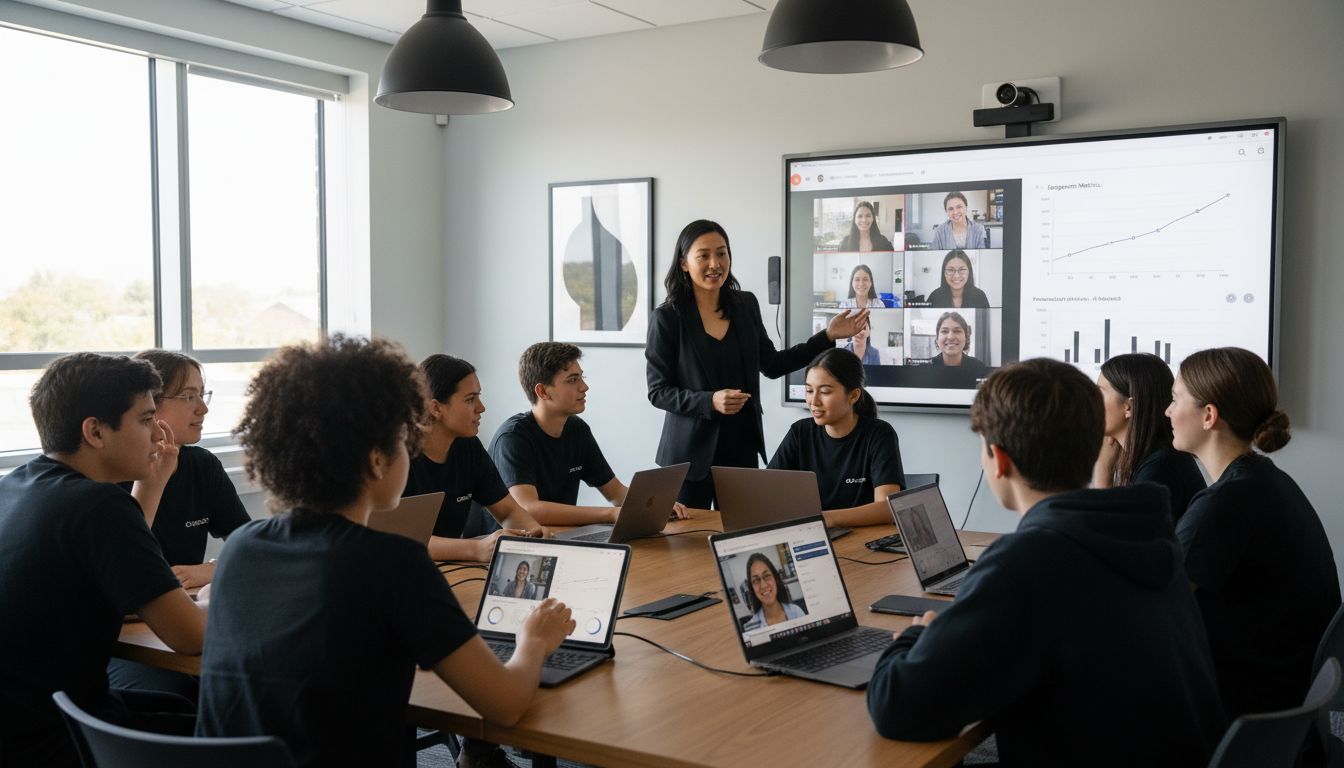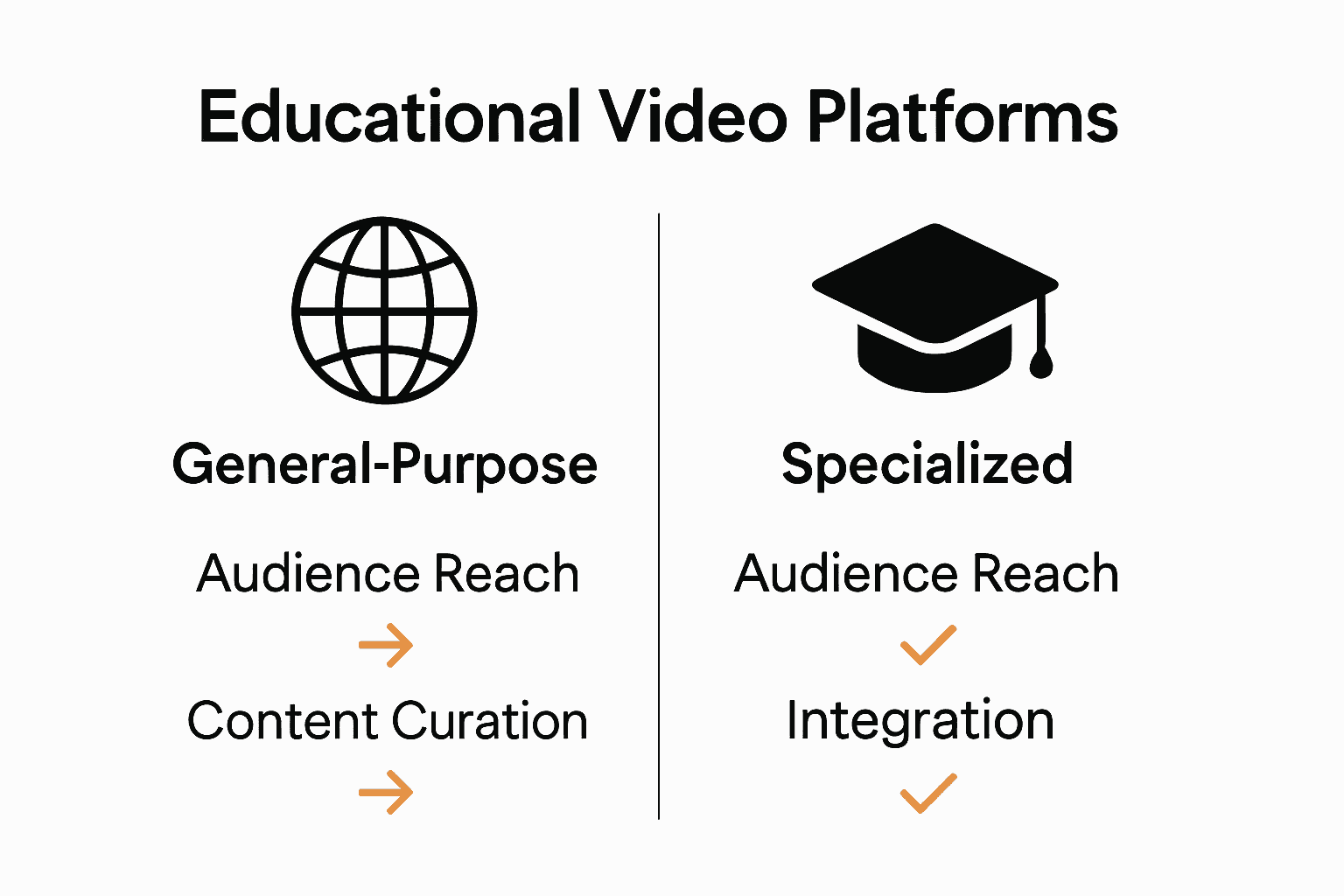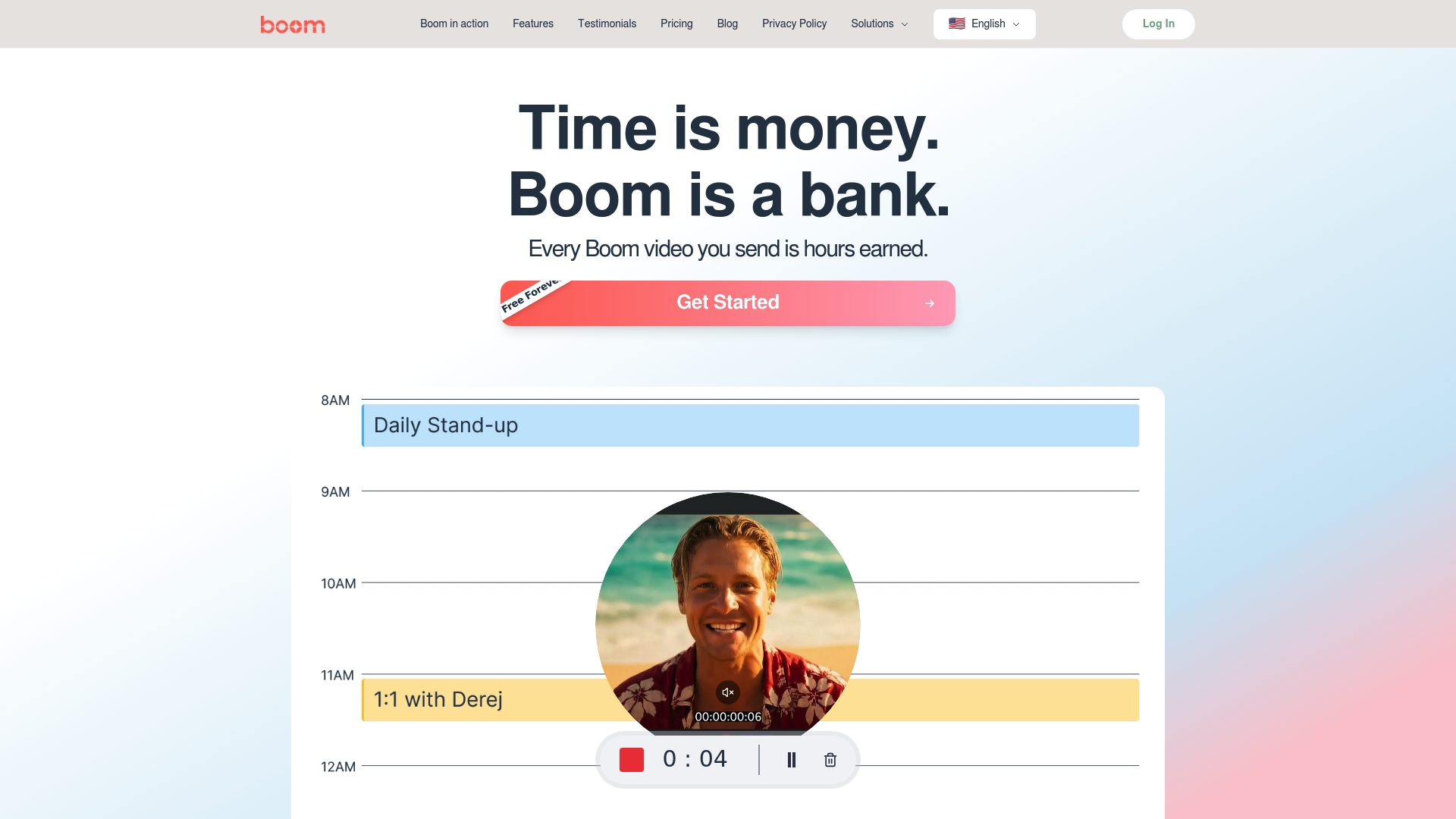Educational Video Tools Explained: Complete Guide
Educational video tools explained in detail: discover core types, advanced features, AI-powered solutions, practical uses, and common pitfalls in this comprehensive guide.
Devdeep
Author
Educational Video Tools Explained: Complete Guide

Did you know that over 90 percent of teachers now use video in the classroom to boost student engagement? The shift toward digital learning tools is reshaping how information is delivered and absorbed. Educational video tools offer educators and learners richer, more interactive ways to connect with course content, making complex subjects easier to understand and access from anywhere.
Table of Contents
Key Takeaways
| Point | Details |
|---|---|
| Educational Video Tools | These platforms enhance learning by facilitating the creation, sharing, and utilization of video content across diverse educational settings. |
| Types of Platforms | Platforms are categorized as general-purpose (e.g., YouTube Education) and specialized (e.g., TeacherTube), each serving distinct needs for learners and educators. |
| Core Features and AI Advancements | Modern educational video tools leverage AI to provide personalized learning experiences, interactive content, and real-time engagement tracking. |
| Cost and Challenges | While many platforms offer free resources, they face challenges related to content quality, user data protection, and compliance with educational regulations. |
What Are Educational Video Tools?
- What Are Educational Video Tools?
- Main Types of Educational Video Platforms
- Core Features And Ai Advancements
- Practical Use Cases In Learning And Work
- Cost, Security, And Common Challenges
Educational video tools are sophisticated digital platforms designed to transform how learning content is created, shared, and experienced. According to Wikipedia, these tools are technologies that facilitate the creation, sharing, and utilization of video content for educational purposes.
These innovative platforms serve multiple critical functions for modern learners and educators:
- Hosting educational video content
- Enabling interactive learning experiences
- Supporting curriculum integration
- Providing multimedia teaching resources
- Facilitating remote and asynchronous learning
As an example of how comprehensive these tools can be, Wikipedia highlights platforms like TeacherTube, which allow educators to share not just videos, but also audio recordings, documents, and blogs to enhance teaching and learning experiences.
Modern educational video tools go beyond simple video hosting. They incorporate advanced features like interactive quizzes, analytics tracking student engagement, closed captioning, language translation, and seamless integration with learning management systems. Learn more about modern video tool features in our guide on understanding video technologies.
By democratizing access to high-quality educational content, these tools are revolutionizing how knowledge is transmitted and absorbed across diverse learning environments.
Main Types of Educational Video Platforms
Educational video platforms have evolved to serve diverse learning needs across multiple contexts. Wikipedia highlights two primary categories of these platforms: general-purpose and specialized educational resources.
Here are the main types of educational video platforms:
- General-Purpose Platforms
- YouTube Education
- Vimeo
- Coursera
- Khan Academy
- TED Talks
- Specialized Educational Platforms
- TeacherTube, which allows educators to share targeted teaching resources
- edX
- Udemy
- LinkedIn Learning
- Academic-specific platforms
Specialized platforms like TeacherTube offer unique advantages by providing curated, education-specific content that goes beyond typical video hosting. These platforms allow educators to share not just videos, but also audio recordings, documents, and educational blogs.
Explore seven effective video content strategies for enhancing team collaboration to understand how different video platforms can transform learning and communication. Each platform brings its own strengths, whether it's comprehensive course structures, niche educational content, or interactive learning experiences.
Here's a comparison of general-purpose and specialized educational video platforms:

| Category | Examples | Key Advantages |
|---|---|---|
| General-Purpose | YouTube Education<br>Vimeo<br>Coursera<br>Khan Academy<br>TED Talks | Broad audience reach<br>Diverse content<br>Free access options |
| Specialized | TeacherTube<br>edX<br>Udemy<br>LinkedIn Learning<br>Academic-specific platforms | Curated educational material<br>Targeted teaching resources<br>Enhanced classroom integration |
Core Features and AI Advancements
Educational video technologies are experiencing a transformative revolution driven by artificial intelligence and interactive design. According to research from WeVideo, modern platforms now offer interactive video capabilities that dramatically improve learner engagement and content retention.
Key core features of advanced educational video tools include:
- Adaptive Learning Paths
- Personalized content recommendations
- Real-time progress tracking
- Interactive quiz integration
- Accessibility options
- Multilingual support
AI advancements are particularly exciting in this space. ArXiv research highlights breakthrough developments in playback-centric visualizations, where AI can now guide students by highlighting which video segments are most critical based on interaction data.
Explore how AI is transforming content creation strategies to understand the sophisticated ways artificial intelligence is reshaping educational video experiences. These technological innovations are not just incremental improvements but fundamental reimaginings of how digital learning can be personalized, engaging, and truly adaptive to individual learning styles.
Practical Use Cases in Learning and Work
Educational video tools have transformed how knowledge is acquired and shared across diverse professional and academic environments. Wikipedia highlights their versatility in both formal educational settings and professional development contexts, enabling individuals to learn new skills through innovative video-based platforms.
Practical use cases span multiple domains:
- Academic Learning
- Virtual classroom lectures
- Subject-specific tutorials
- Research presentation recordings
- Student project demonstrations
- Interactive course materials
- Professional Development
- Technical skill training
- Corporate onboarding programs
- Sales and communication workshops
- Compliance and safety training
- Software and tool tutorials
TeacherTube exemplifies how these platforms facilitate resource sharing and collaboration, particularly among educators who can exchange teaching materials seamlessly across geographic boundaries.
Explore seven effective video content strategies for enhancing team collaboration to understand how video tools are revolutionizing communication and learning across industries. From academic institutions to multinational corporations, these platforms are breaking down traditional barriers to knowledge transfer and skill development.

Cost, Security, and Common Challenges
Educational video platforms present a complex landscape of opportunities and potential pitfalls. Wikipedia highlights that while many platforms offer free access to resources, they simultaneously face significant challenges in managing content quality and appropriateness.
Key considerations for educational video tools include:
Cost Dimensions
- Free tier limitations
- Subscription-based professional features
- Enterprise licensing models
- Per-user pricing structures
- Volume-based discounts
Security and Compliance Challenges
- User data protection
- Content moderation
- Age-appropriate filtering
- Intellectual property rights
- GDPR and educational privacy regulations
Wikipedia notes that general-purpose platforms like YouTube provide extensive educational content but struggle with consistent quality control and potential non-educational material contamination.
Understand how AI is transforming productivity in video technologies to see how advanced platforms are addressing these complex challenges. The future of educational video tools lies in creating secure, accessible, and high-quality learning environments that balance open access with rigorous content standards.
Transform Learning and Communication with AI-Powered Educational Video Tools
The article explores the growing need for engaging and adaptive educational video solutions that overcome scheduling hassles, ensure clear communication, and deliver personalized learning experiences. If you struggle with coordinating live sessions, creating polished content, or reaching a global audience, you are not alone. As educational platforms advance with AI-driven features and async designs, the challenge remains how to save time while keeping your message clear and on brand.
Boom meets these exact needs by turning your voice into stunning, ready-to-share videos using AI scripting, multilingual voiceover, and intuitive async workflows. Imagine replacing countless meetings and poorly timed live lessons with videos that learners and teams can watch anytime, anywhere. This means more focus on what matters most — the content and its impact.
Ready to earn back hours of your day and boost collaboration across academic and professional settings? Discover how Boom’s AI video tools empower creators, educators, and remote teams.

Start creating with Boom today and experience a smarter way to teach, pitch, or update without the stress of live meetings. Visit https://boomshare.ai to get started for free and explore how AI is transforming content creation for modern educators and professionals.
Frequently Asked Questions
What are educational video tools?
Educational video tools are digital platforms designed to create, share, and use video content for educational purposes, facilitating interactive learning and remote education.
What are the main types of educational video platforms?
The main types of educational video platforms are general-purpose platforms (like YouTube Education and Khan Academy) and specialized educational platforms (like TeacherTube and Coursera), catering to diverse learning needs.
What key features should I look for in educational video tools?
Important features to consider in educational video tools include interactive quizzes, adaptive learning paths, real-time progress tracking, accessibility options, and multilingual support.
How can educational video tools be used for professional development?
Educational video tools can be employed for corporate training, onboarding programs, skill workshops, compliance training, and tutorial videos, making learning more accessible and engaging.
Recommended
About the Author
Devdeep
Senior Software Engineer.
